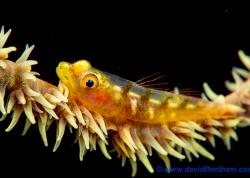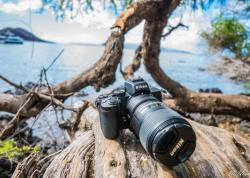The Ultimate Guide to Shooting Wrecks
Shipwrecks have always been fascinating to me. Almost every wreck has some amazing history, an interesting story or some unsolved mystery attached to it. Wrecks make great artificial reefs (whether sunk intentionally or not) and marine life is often abundant around them. As photographers, there are some wrecks where we can portray both tragic loss of life and beauty in the same image.
Diving and photographing shipwrecks presents many challenges. Oftentimes their size and depth makes it impossible to see the whole site on a single dive. Even when we have the opportunity to do multiple dives on the same site we are still limited to (non-deco) bottom time and air.
Part of successful wreck photography is limiting your attention to the most important shots. This often involves shooting extremely large objects, sometimes way too big to light with strobes. To get the most out of shooting wrecks, you will need to use ambient light, strobe light and sometimes a combination of both to achieve your shots. Many photographers will even use filters and slave strobes for shooting wide wreck scenes. It's up to you to recognize when to use the variety of lighting techniques available.
Certain wrecks require extra care when diving since cables, nets and other items may present an entanglement hazard for divers. Like any diving activity, stay within your comfort and training level.
The following are my five top tips to get the ultimate wreck shots.

Shoot an Establishing Shot
This is most likely going to be an ambient light or ambient with filter shot, as most wrecks are too big to light with strobes. If the visibility is good enough this is often the first shot I go for. If possible, descend to the site before the other divers to have a chance in order to capture a diver-free image. Having a diver in the shot can add scale but too many divers will often ruin the shot. If divers are penetrating the wreck you can have bubbles escaping the wreck for hours after the last person has exited. This can make for an interesting image in itself, but if you are after a bubble-free shot you will need to get there first.

Get the Signature Shot
Many wrecks are just too big to do on a single dive, so get the signature shot before moving on to other things. And unless you are the first person to ever dive the site, there is probably already an established and well-known signature shot. This image is an important part of the ship or an artifact inside the wreck. It can be the bow gun, prop, ship’s bell or anything that is easy to recognize on the wreck.

Look for Silhouettes
Most wrecks are loaded with great silhouettes, whether you use them in the background with a strobe-lit foreground or on their own. The king posts, masts and ship guns are all good places to look for silhouette potential.

Shoot Some Color
The steel hulls on many wrecks attract sponges, soft corals and other colorful marine animals. Take some shots that show how the wreck has transformed. The key is to include something in the shot that still makes it recognizable as a wreck; otherwise it will just look like a colorful reef.

Interior and Skylight
This is my favorite type of wreck shot and it is not always possible on every wreck. It is essentially some item or artifact lit by my strobes inside the wreck along with light from a skylight, porthole or other opening in the hull that lets in some ambient light. I think these types of shots really give the viewer an idea of what it is like to be inside the wreck. Note that your exhaust bubbles from open circuit will dislodge particles from the ceiling when working inside a wreck, and that it doesn’t take long before you are shooting in what looks like a snow globe. It's also important to work fast and maintain good buoyancy to avoid disturbing even more sediment.

Many of the wrecks we dive have gone down with the loss of human lives. Some still contain bones to this day. I feel it's important to treat such wrecks with the same respect you would show at any other gravesite and I hope you will do the same.

If you would like to join me in shooting shipwrecks, please check out UWPG's Truk Lagoon Trip in February of 2015.
About the Author
Todd Winner is a professional underwater photographer and cinematographer, PADI scuba instructor and owner of Winner Productions, a boutique post production facility catering to Hollywood's most elite cinematographers. Since taking up underwater photography in 1990, Todd Winner has won over 60 international underwater photo competitions. His images have been published in numerous magazines and online publications. His work has been featured in commercial advertising, museums and private galleries. To see more of Todd's work or join him on an underwater workshop, please visit www.toddwinner.com.
Further Reading
RECOMMENDED ARTICLES
SUPPORT THE UNDERWATER PHOTOGRAPHY GUIDE:
The Best Service & Prices on u/w Photo Gear
 Visit Bluewater Photo & Video for all your underwater photography and video gear. Click, or call the team at (310) 633-5052 for expert advice!
Visit Bluewater Photo & Video for all your underwater photography and video gear. Click, or call the team at (310) 633-5052 for expert advice!
The Best Pricing, Service & Expert Advice to Book your Dive Trips
 Bluewater Travel is your full-service scuba travel agency. Let our expert advisers plan and book your next dive vacation. Run by divers, for divers.
Bluewater Travel is your full-service scuba travel agency. Let our expert advisers plan and book your next dive vacation. Run by divers, for divers.































